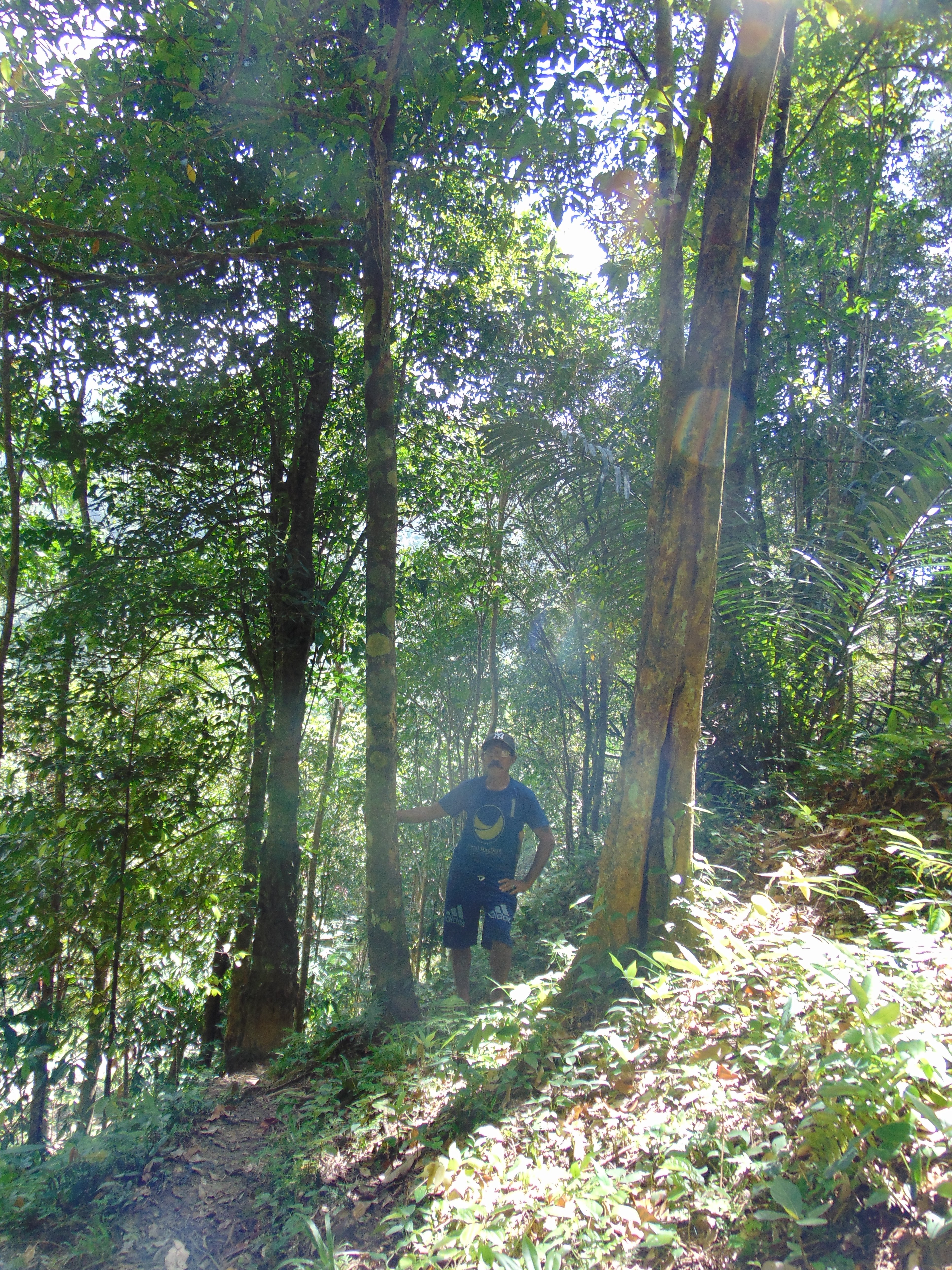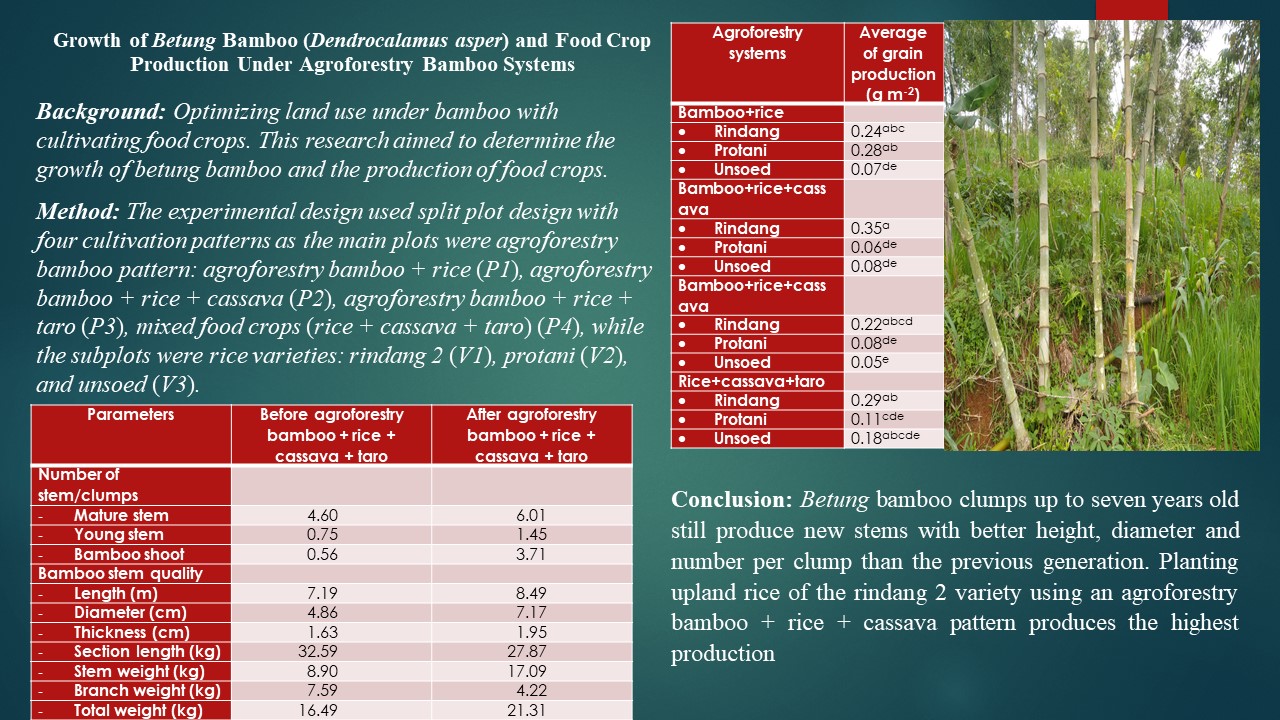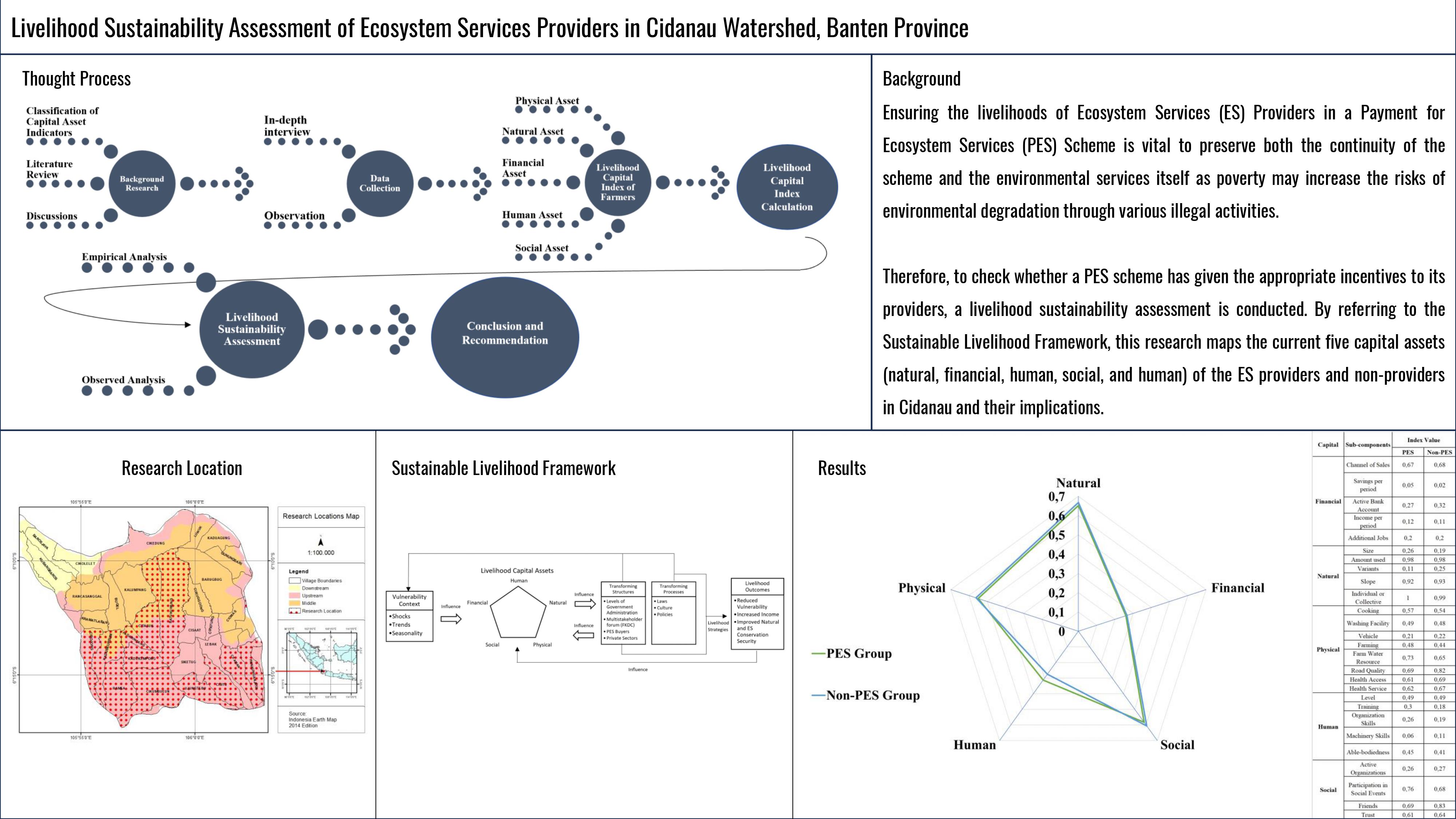How do the Customary Forest and Protected Forest Management Principles affect Ambon City Protected Forest Management between the Government and Indigenous Peoples? (Case in the Mount Sirimau Protection Forest Group, Ambon City, Maluku Province)
Abstract
Protection forests are state forests that are authorized by the government to be managed, but on the other hand, indigenous peoples already exist and manage forests that are claimed as customary forest. How is the management of protection forests between the government and indigenous peoples? The purpose of this study is to examine the management of protection forests between the government and indigenous peoples and the collaboration in the management of protection forests between the two. The results showed that the management of protection forests by the government was not optimal at the site level based on the principles of protection forest management that had only been done with boundaries: only area boundaries, not blocks and plots, forest protection such as area patrols, installation of prohibition boards and appeals) and land rehabilitation (planting with woody plant species and multi-purpose trees. Protected forest management by indigenous peoples has touched the site level on several aspects of protected forest management principles. Protected management activities by indigenous peoples following the principles of protected forest management are the cultivation of fruit plants, land use with dusung/traditional agroforestry cropping patterns, forest protection is prohibited from cutting trees at water sources, along riverbanks, replanting if cutting fruit trees that are not productive, utilizing non-timber forest products. The government as the planner but implementing it in the field is the indigenous people who are accompanied by the government and joint monitoring and evaluation. Protected forest management based on the principle of protected forest management is more optimally carried out in a collaborative and complementary manner between the government and indigenous peoples.
References
Arikunto, S. (2013). Prosedur penelitian: Suatu pendekatan praktik. Jakarta: Rineka Cipta.
Arsyad, S. (1989). Konservasi tanah dan air. Bogor: IPB Press.
Ayling, R. D., & Kelly, K. (1997). Dealing with conflict: natural resources and dispute resolution. The Commonwealth Forest Review, 76(3), 182–185. https://www.jstor.org/stable/42608590
Bong, I. W., Moeliono, M., Wong, G. Y., & Brockhaus, M. (2019). What is success? Gaps and trade-offs in assessing the performance of traditional social forestry systems in Indonesia. Forest and Society, 3(1), 1–21. https://doi.org/10.24259/fs.v3i1.5184
Edmunds, D. S., & Wollenberg, E.K. (Eds). (2003). Local forest management : the impacts of devolution policies. New York: Earthscan Publications Ltd.
Fatikawati, Y. N., & Muktiali, M. (2015). Pengaruh keberadaan industri gula blora terhadap perubahan penggunaan lahan, sosial ekonomi dan lingkungan di Desa Tinapan dan Desa Kedungwungu. Teknik PWK (Perencanaan Wilayah Kota), 4(3), 345–360. https://ejournal3.undip.ac.id/index.php/pwk/article/view/9084/8855
Fisher, L. A., Kim, Y. S., Latifah, S., & Makarom, M. (2017). Managing Forest Conflicts: Perspectives of Indonesia’s forest management unit directors. Forest and Society, 1(1), 8–26. http://dx.doi.org/10.24259/fs.v1i1.772
Ghozali, I. (2011). Aplikasi analisis multivariate dengan program SPSS. Semarang: Badan Penerbit Universitas Diponegoro.
Gritten, D., & Mola-Yudego, B. (2011). Exploration of the relevance of geographical, environmental and socio-economic indicators regarding forest conflict types. International Forestry Review, 13(1), 46–55. https://doi.org/10.1505/146554811798201189
Hardjowigeno, S. (2002). Ilmu Tanah. Jakarta: Mediyatama Sarana Perkasa.
Harwell, E. (2010). Forests in fragile and conflict-affected states. Washington, DC: World Bank. https://openknowledge.worldbank.org/bitstream/handle/10986/9108/WDR2011_0027.pdf?sequence=1&isAllowed=y
Jayadinata, J. T. 1999. Tata guna tanah dalam perencanaan pedesaan, perkotaan dan wilayah. Bandung: ITB Press.
Hellstrom, E. (2001). Conflict cultures: Qualitative comparative analysis of environmental conflicts in forestry. Silva Fennica Monographs 2 (109 p). Finland: Tampere. Retrieved from: https://helda.helsinki.fi/bitstream/handle/10138/20928/conflict.pdf?sequence=1
Iriani, A. Y. (2008). Distribusi kepemilikan tanah pertanian dan sistem tenurial di Desa Kota: Kasus Desa Cibatok 1, Kecamatan Cibungbulang, Kabupaten Bogor, Provinsi Jawa Barat [thesis]. Bogor: IPB University.
Koning, R. D., Capistrano, D., Yasmi, Y., & Cerutti, P. (2007). Forest-related conflict: impacts, links and measures to mitigate. Washington: Rights and Resources Initiative.
Lindgren, D. T. (1985). Penginderaan jauh untuk perencanaan penggunaan lahan. Yogyakarta: Gadjah Mada University Press.
Malaka, Z. (2018). Kepemilikan tanah dalam konsep hukum positif indoensia, hukum adat dan hukum islam. Al-Qanun: Jurnal Pemikiran Dan Pembaharuan Hukum Islam, 21(1), 103–127. https://doi.org/10.15642/alqanun.2018.21.1.103-127
Maryudi, A., Citraningtyas, E. R., Purwanto, R. H., Sadono, R., Suryanto, P., Riyanto, S., & Siswoko, B. D. (2015). The emerging power of peasant farmers in the tenurial conflicts over the uses of state forestland in Central Java, Indonesia. Forest Policy and Economics, 67, 70–75. https://doi.org/10.1016/j.forpol.2015.09.005
Milunardi, Fahrizal, & Iskandar. (2014). Partisipasi masyarakat sekitar hutan dalam melestarikan hutan adat sebagai daerah penyangga sumber air di Desa Menyabo Kecamatan Tayan Hulu Kabupaten Sanggau. Jurnal Hutan Lestari, 2(2), 334–340. http://dx.doi.org/10.26418/jhl.v2i2.6932
Ministry of Environment and Forestry [MoEF]. (2018). Masyarakat bisa pakai fasilitas dana bergulir untuk usaha kehutanan. MoEF. http://ppid.menlhk.go.id/berita/siaran-pers/4076/masyarakat-bisa-pakai-fasilitas-dana-bergulir-untuk-usaha-kehutanan
Mulyadi, M. (2013). Pemberdayaan masyarakat adat dalam pembangunan kehutanan. Jurnal Penelitian Sosial Dan Ekonomi Kehutanan, 10(4), 224–234. https://doi.org/10.20886/jpsek.2013.10.4.224-234
Muhajir, M., Arizona, Y., Firdaus, A. Y., & Safitri, M. A. (2011). Kertas Kerja Epistema: Arah reformasi kebijakan penguasaan kawasan hutan di Indonesia. Jakarta: Epistema Institute. Retrieved from: http://epistema.or.id/wp-content/uploads/2015/07/Working_Paper_Epistema_Institute_02-2011.pdf
Nababan, A. (2008, November 5). Pengelolaan hutan berbasis masyarakat adat : Antara konsep dan realitas [Conference presentation]. Seminar Hutan Tanaman Rakyat, Untuk Apa dan Siapa: Pertemuan Mitra Siemenpu Foundation. Muara Jambi, Indonesia.
Nugroho, H. (2002). Reformasi politik agraria mewujudkan pemberdayaan hak-hak atas tanah. Bandung: Mandar Maju.
Parera, E., Purwanto, R. H., Permadi, D. B., & Sumardi, S. (2020). Changes in land cover of the Mount Sirimau Protected Group, Ambon City Maluku Province. International Journal of Advanced Research, 9, 877–885. http://dx.doi.org/10.21474/IJAR01/12364
Senoaji, G. (2011). Kondisi sosial ekonomi masyarakat sekitar hutan lindung bukit daun di Bengkulu. Sosiohumaniora, 13(1), 1–17. https://doi.org/10.24198/sosiohumaniora.v13i1.5458
Sillia, I., Sela R. L., & Tilaar, S. (2017). Arahan pengembangan penggunaan lahan permukiman di Kecamatan Amurang Barat, Kabupaten Minahasa Selatan. SPASIAL, 4(2), 1–11. https://doi.org/10.35793/sp.v4i2.15987
Sugandhy, A. (1999). Penataan ruang dalam pengelolaan lingkungan hidup. Jakarta: Gramedia Pustaka Utama.
Sugiyono. (2018). Metode penelitian kombinasi (mixed methods). Bandung: CV. Alfabeta.
Soepijanto, B., Zauhar, S., Haryono, B. S., & Soeaidy, S. (2013). Model of effective community empowerment policy of forestry partnership to forest community in Mesuji-Lampung. J Human Soc Sci, 17(1), 7–14. https://www.iosrjournals.org/iosr-jhss/papers/Vol17-issue1/B01710714.pdf
Tajuddin, T., Supratman, S., Salman, D., & Yusran, Y. (2019). Bridging social forestry and forest management units: Juxtapusing policy imaginaries with implementation practices in a case from sulawesi. Forest and Society, 3(1), 97–113. http://dx.doi.org/10.24259/fs.v3i1.6049
WRI Indonesia. (2018). Perjalanan panjang dan melelahkan menuju pengakuan hak tanah adat. WRI Indonesia. https://wri-indonesia.org/id/blog/perjalanan-panjang-dan-melelahkan-menuju-pengakuan-hak-tanah-adat
WRI Indonesia. (2020). Kepemilikan lahan dan pemberdayaan perempuan. WRI Indonesia. https://wri-indonesia.org/id/blog/kepemilikan-lahan-dan-pemberdayaan-perempuan
Yasmi, Y., Kelley, L., Murdiyarso, D., & Patel, T. (2012). The struggle over Asia’s forests: An overview of forest conflict and potential implications for REDD+. International Forestry Review, 14(1), 99–109. https://doi.org/10.1505/146554812799973127
Yasmi, Y., Schanz, H., & Salim, A. (2006). Manifestation of conflict escalation in natural resource management. Environmental Science & Policy, 9(6), 538-546. https://doi.org/10.1016/j.envsci.2006.04.003
Authors

This work is licensed under a Creative Commons Attribution 4.0 International License.
Jurnal Manajemen Hutan Tropika is an open access journal which means that all contents is freely available without charge to the user or his/her institution. Users are allowed to read, download, copy, distribute, print, search, or link to the full texts of the articles in this journal without asking prior permission from the publisher or the author. This is in accordance with the Budapest Open Access Initiative (BOAI) definition of open access.








